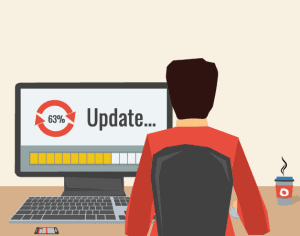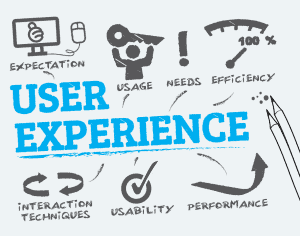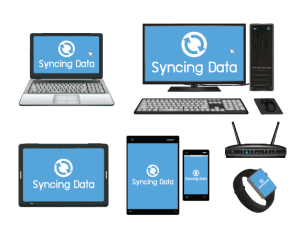Key Challenges for Enterprise Mobile Developers
Mobility is in the midst of a golden run, with smartphones and tablets the medium of choice for the always harried and on-the-move enterprise users. Paradoxically, the mobile boom has made life difficult for enterprise mobility solution developers. Even as the vibrant mobility development space offers plenty of opportunities, a plethora of challenges stump developers.
The Challenge of Emerging Technologies
Mobile developers struggle to play catch up, to release updates and make their apps relevant in the face of fast-paced developments in OS and hardware technology. The following are a few cases in point.
- The sheer volumes of iOS APIs unleashed in recent times overwhelms even the most competent app developer.
- Enterprise developers estimating which new tooling features might align to their apps’ features are now a routine occurrence. More often than not, developers miss the update and scurry to fix the code.
The pace of change compounds the misery. Where developers rolled out updates in 30 days before, they find the need to update the code in just one or two days, or else run the risk of their apps turning dysfunctional.
There is no shortcut to solve the imbroglio. The best developers remain on tenterhooks, tracking emerging technologies and maturing standards, and regard app development as a constant exercise rather than as one-off projects.
The Challenge of Device Fragmentation
The hopelessly fragmented digital marketplace, a result of the constant treadmill of new devices and OS, compound the misery of the app developer. Today’s app developers are virtually working blind, not knowing their target platform.
The sheer number of devices in the market makes it virtually impossible to test the app for all usage scenario permutations and combinations. Cloud-based simulated testing, clearly the future of app testing, however, is just taking off. As things stand, developers face a Hobson’s choice on which device to invest for testing their apps.
Until not too long ago, enterprise mobility solution developers were immune from this challenge, as they could focus their efforts on the limited number of platforms and OS used by the enterprise. However, Bring-Your-Own-Device (BYOD) policies now force enterprise apps to support a variety of mobile devices. Gartner predicts half of all employers to require employees to BYOD, by 2017.
While there is no shortcut to testing the app on multiple browsers and multiple carrier connections, developers can optimize their development and testing efforts by:
- Targeting the most likely platforms in which the app would run.
- Employing consistent and reliable development practices across all leading platforms, ensuring consistency in look and feel.
- Creating globally recognizable but culturally sensitive graphics.
App developers also need to be on guard against the focus on usability distracting them from testing other crucial elements, such as whether their apps are battery hogs.
UX Challenges
User Experience (UX) makes or breaks an app. Forrester estimates about 64% of employees not using enterprise mobile apps, owing to poor UX. Enterprise users, hard pressed for time, always value simplicity. The challenge for app developers is to pack in the required functionality, and ensure the app meets the required aesthetics related to corporate branding, while still ensuring simplicity.
Opting for a responsive design to attain mastery of the cross-platform scenario is a good first step, and a minimalist approach to design is a good second step. However, success ultimately depends on how best the screen real estate is put to use. Intuitive use of icons often creates a useful and natural mobile UX. Equipping the app with analytics to track engagement metrics, monitoring crash logs, and a structured feedback mechanism help developers fine tune their apps, but app developers still; have a challenge in setting up these processes.
Security Challenges
The fragmented digital marketplace raises big security challenges as well. Each operating system has its own custom architecture, and different mobile platforms offer varying degrees of support for securing the data stored on the device. Another challenge is reconciling the actual level of security needed.
It is always a good idea to encrypt data and keep it in a secure container inside the device. Another best practice is integration with the enterprise’s LDAP directory, to ensure proper authentication and single-sign-on (SSO) across all enterprises apps. Opting for server-side validation, instead of client side validation prevents complex validations from dragging down the app to a crawl. However, many mobility solution developers forget security is a flexible thing, and blindly apply such best practices across-the-board. While multi-factor authentication is understandable in banking apps that facilitate bill pay, the same level of security will be an overkill, and a big put-off for an informational app.
Challenges Related to Content Management and Data Access
Access to corporate data, often sensitive in nature, is critical for most enterprise mobile solutions. Such data usually resides in a backend database. Developers need to decide on how best to access such data, and whether to store the accessed data in the device’s native file system, for offline access. Either way, ensuring seamless sync of data between the app and the backend is a challenge.
Enterprise mobility solution developers need to sit down with business managers and understand the business process, to get data access right. For instance, a field salesperson may need to download inventory data when meeting a client, in a place where there is no network. In such an eventuality, the app would also require not just data storage capabilities, but also synchronization capabilities to update the inventory once the salesperson returns online. The app also needs to understand when a connection is dropped, to roll back to its last-known data.
A related challenge is bundling all diverse content type, be it videos, images, animation, or text, into monolithic expansion files, as required by many app stores.
Challenge of Development Technology
HTML5-CSS3 based cross-platform development generally offers advantages in terms of cost, reduced time-to-market, and portability across platforms. However, HTML5 is not without its drawbacks either, such as limitations in local data storage, security concerns, and more. Many developers opt for native, platform specific development for better UX and superior application performance, but such advantages often come at a high cost, and increase time-to-market considerably. Enterprise mobility solution developers have a task on their hand, not just identifying a development technology, but trying to get the best of both worlds.
Understanding user requirements to the last detail is the key to deciding on the development approach. There is no workaround to technical competency in doing the job well, regardless of the approach chosen.
The success of enterprise mobility solution development lies not just in developing the app, but also ensuring a smooth and efficient distribution system. The developer can hardly afford to rest on her laurels, having overcome all the challenges they faced during the development phase. They still need to manage application stores, manage integrated device management, and brace themselves for the never ending update cycles.
If your enterprise requires mobility solutions, as most enterprises nowadays do, a competent partner who knows their stuff makes life easy, and will improve the worth of your mobility solutions manifold. Get in touch with us for everything related to enterprise mobility solutions.
Stay up to date on what's new

Recommended Posts

25 Aug 2020
Why It’s Time to Embrace Cloud and Mobility Trends To Recession-Proof Your Business?
Cloud and Mobility: The two pillars to recession-proof your business Introduction How Does the Recovery Shape of The Coronavirus Recession Look? What is a recession-proof business? What can business……

05 Nov 2015
Why Should Your Business Invest In Enterprise Mobile Application Development?
Guess what the global population is today! It’s 7 billion and is ticking faster than the stopwatch needle. Out of this, there are more than 2.7 billion smartphone subscriptions worldwide……
Featured Blogs
Stay up to date on
what's new























































